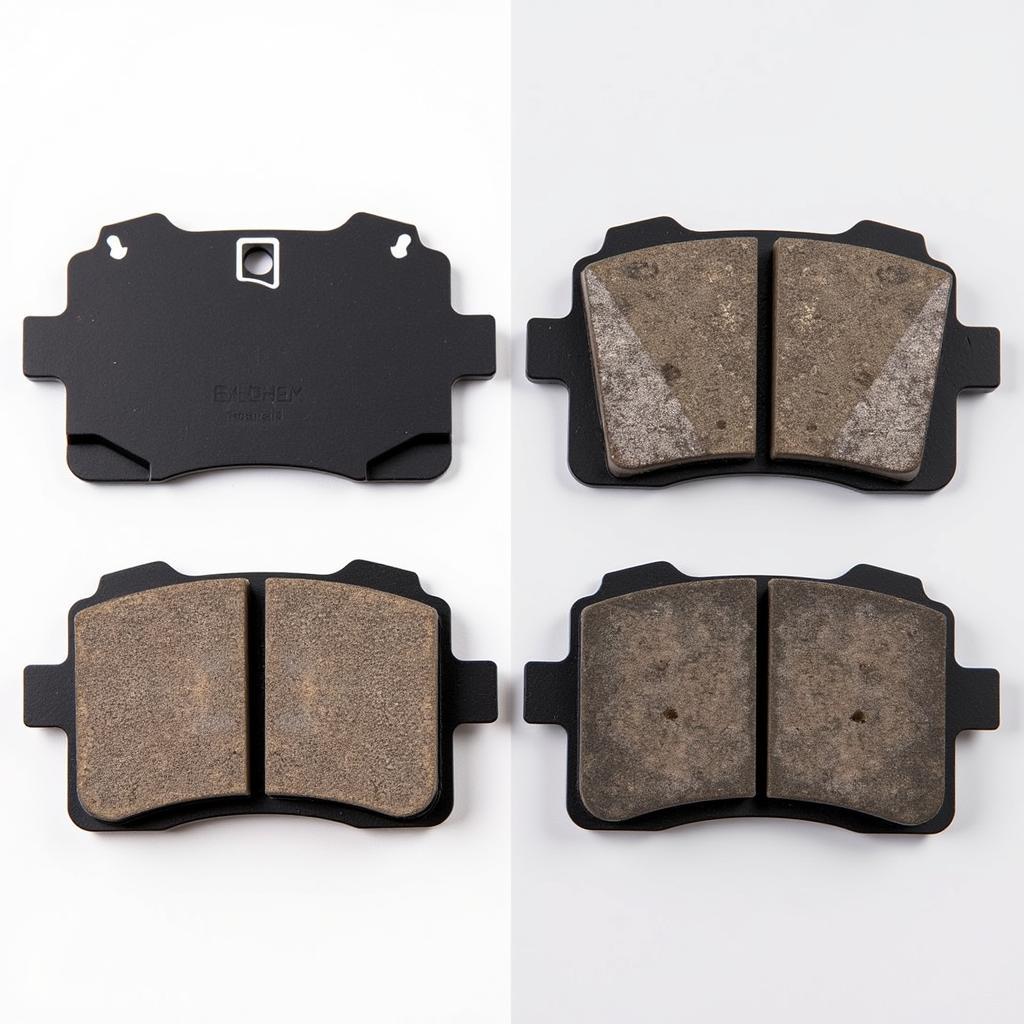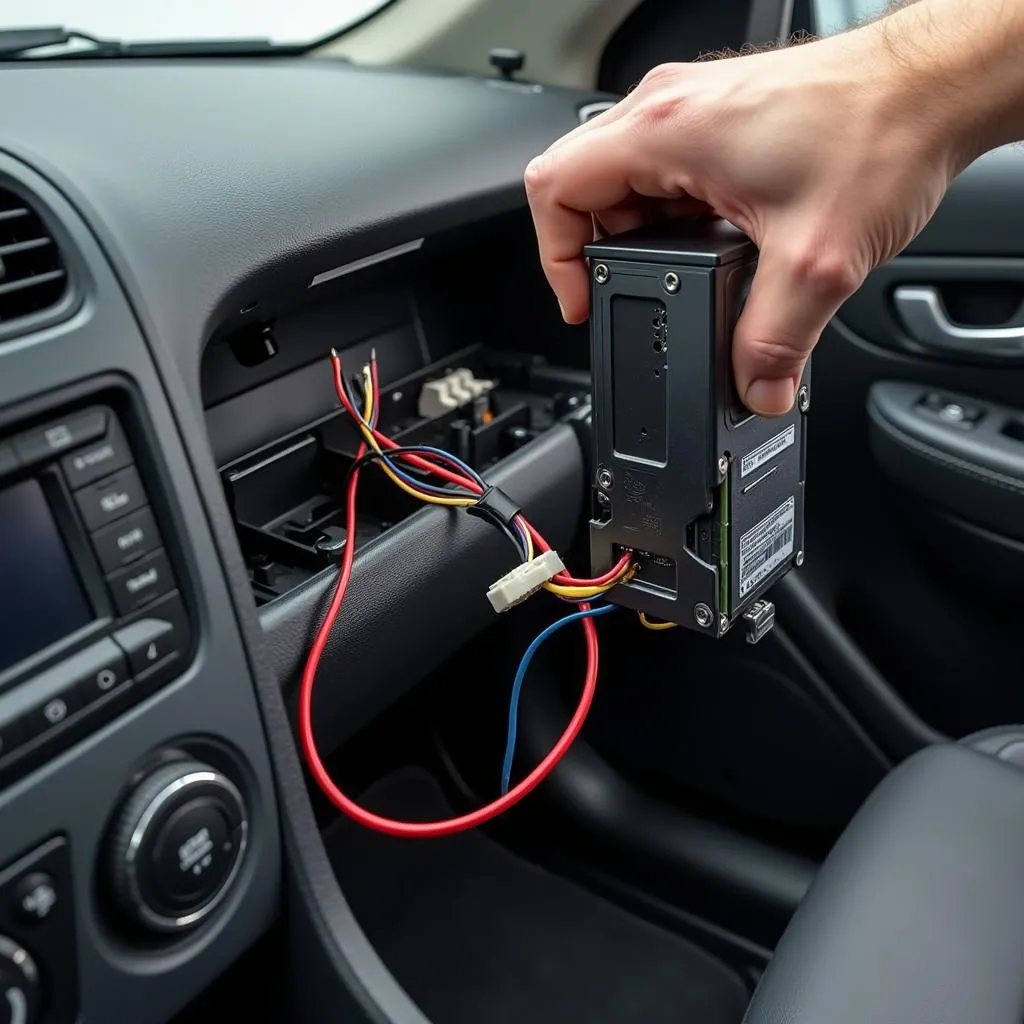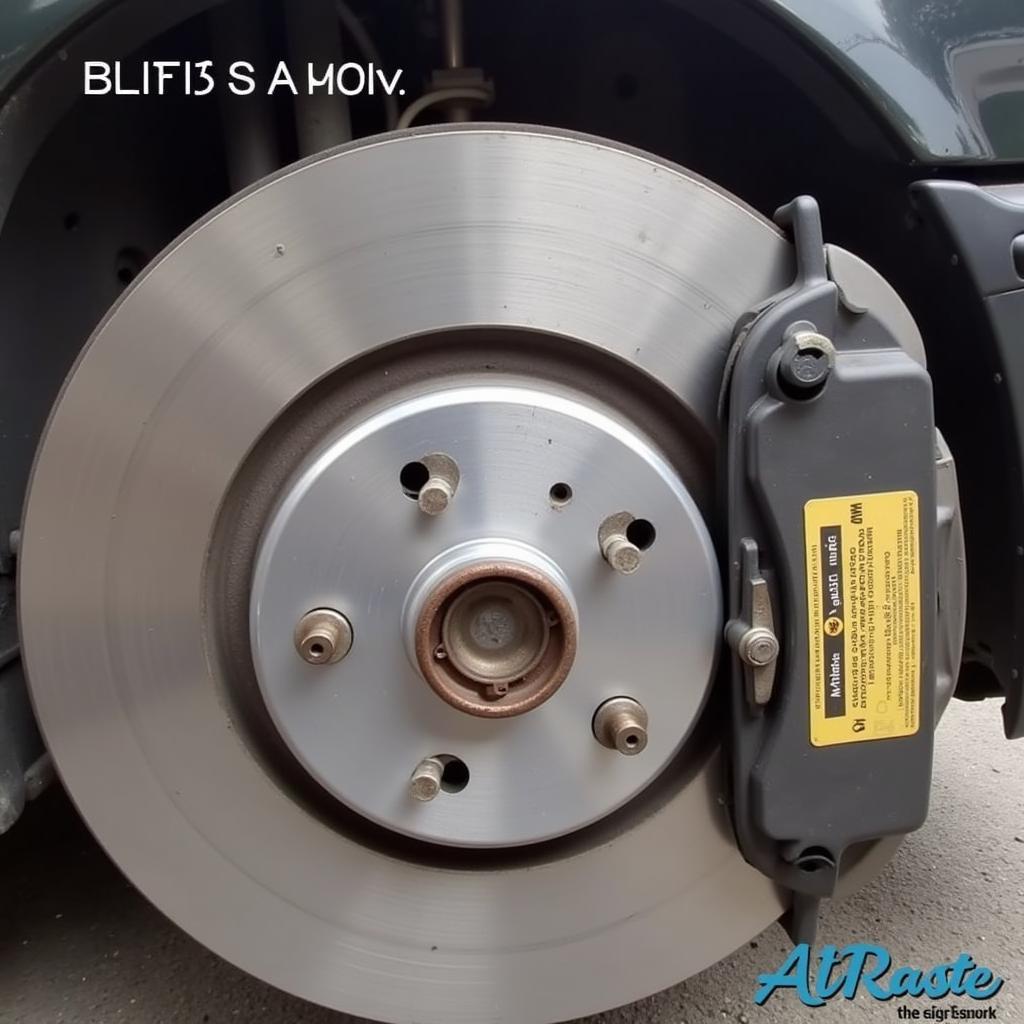One of the scariest things you can experience as a Porsche driver is seeing a warning light illuminate on your dashboard. While some warnings are merely informational, others indicate a serious issue requiring immediate attention. One such warning is the dreaded brake pad lining warning light. This article will explore the common causes of this light illuminating, how to diagnose the issue, and your options for getting it fixed.
Understanding Your Porsche’s Brake Pad Wear Sensors
Modern Porsches are equipped with sophisticated brake pad wear sensors designed to alert you when the brake pads have worn down and require replacement. These sensors are small, strategically placed wires embedded within the brake pad material itself.
As you engage your brakes, the pads wear down naturally over time. When the pad material reaches a critically low level, the wear sensor makes contact with the brake rotor. This contact completes an electrical circuit, triggering the brake pad lining warning light on your dashboard.
Common Causes of a Porsche Brake Pad Lining Warning Light
While worn brake pads are the most common culprit behind the illuminated warning light, other factors can contribute to this issue:
- Worn Brake Pad Sensors: Like any other component, brake pad sensors can wear out or become damaged over time. A faulty sensor can trigger a false warning, even if your brake pads are in good condition.
- Damaged Wiring: The wiring harness connected to the brake pad sensors can become damaged due to corrosion, wear and tear, or rodent activity.
- Faulty Brake Pad Sensor Connector: The connector that attaches the sensor wiring to the vehicle’s electrical system can also become corroded or damaged, disrupting the signal.
- Issues with the Instrument Cluster: In rare instances, a malfunctioning instrument cluster can lead to a false warning light illumination.
Diagnosing the Issue: What to Do When the Light Comes On
If your Porsche’s brake pad lining warning light illuminates, the first and most crucial step is not to panic. Instead, follow these steps:
- Assess Your Driving: Have you noticed any unusual noises or sensations while braking recently? Squealing, grinding, or vibrations when applying the brakes can indicate worn brake pads.
- Check Your Brake Fluid Level: Ensure your brake fluid reservoir is filled to the appropriate level. Low brake fluid can also trigger a warning light and indicate a potential leak in your brake system.
- Inspect Your Brake Pads: If you feel comfortable doing so, you can visually inspect your brake pads for wear. A healthy brake pad will have plenty of friction material remaining. If the friction material is thin or non-existent, it’s time for a replacement.
 Worn brake pads on a Porsche
Worn brake pads on a Porsche
Seeking Professional Help: Remote Diagnostics and Programming
While visual inspections and basic checks can offer some insight, it’s crucial to remember that properly diagnosing a brake pad lining warning light often requires specialized tools and expertise. Here’s where remote diagnostics and programming come in:
- Remote Diagnostics: Utilizing advanced diagnostic equipment, skilled technicians can remotely access your Porsche’s onboard computer system to retrieve fault codes and identify the root cause of the warning light. This eliminates the need to physically take your vehicle to a workshop for an initial assessment.
- Software Updates and Programming: In some cases, the brake pad lining warning light might be triggered by outdated software or a glitch in your Porsche’s electronic control unit (ECU). Remote programming allows technicians to install software updates, recalibrate sensors, and resolve software-related issues without requiring a physical visit.
The Benefits of Remote Diagnostic and Programming Services
Opting for remote diagnostics and programming offers several advantages:
- Convenience: Address the issue from the comfort of your home or office, eliminating travel time and scheduling hassles.
- Faster Turnaround Times: Remote diagnostics often expedite the diagnostic process, leading to quicker identification and resolution of the problem.
- Cost Savings: By streamlining the diagnostic process and minimizing labor costs, remote services can save you money compared to traditional repair methods.
- Access to Expertise: Connect with specialized technicians with the knowledge and experience to diagnose and address complex electronic issues in your Porsche.
Conclusion
Addressing a Porsche brake pad lining warning light is crucial for ensuring your safety and maintaining your vehicle’s performance. While some preliminary checks can provide clues, seeking professional help from experts specializing in remote diagnostics and programming is often the most efficient and effective solution. Early diagnosis and timely repairs can prevent further damage to your Porsche’s braking system, saving you time, money, and potential headaches down the road.
FAQs
1. Can I continue driving with the brake pad lining warning light on?
It’s not advisable to ignore the brake pad lining warning light. Continuing to drive with worn brake pads can compromise your braking ability and potentially damage other brake system components.
2. How much does it cost to replace brake pads on a Porsche?
Brake pad replacement costs for Porsches can vary significantly depending on the model, year, and labor rates in your area.
3. How often should I replace my Porsche’s brake pads?
The lifespan of brake pads depends on driving habits and conditions. As a general guideline, it’s recommended to have your brake pads inspected every 10,000 to 12,000 miles.
4. Are Porsche brake pads covered under warranty?
Brake pads are considered wear-and-tear items and typically have a separate warranty from your vehicle’s comprehensive warranty.
5. Can I replace my Porsche’s brake pads myself?
While possible, brake pad replacement requires mechanical expertise and specialized tools. It’s generally recommended to have this procedure performed by a qualified Porsche mechanic.


